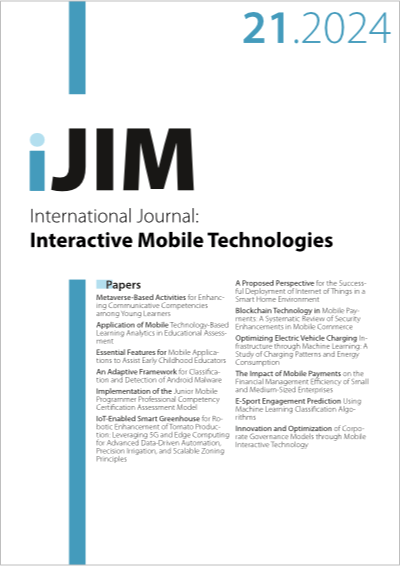Innovation and Optimization of Corporate Governance Models through Mobile Interactive Technology
DOI:
https://doi.org/10.3991/ijim.v18i21.52241Keywords:
corporate governance, mobile interactive technology, matching theory, distributed matching algorithm, collaborative interaction mechanismAbstract
In the context of rapid globalization and the swift advancement of information technology (IT), traditional corporate governance models are increasingly challenged by complex business environments and the growing demand for diversified collaboration. These models often exhibit rigidity and inefficiency. The introduction of mobile interactive technology offers new possibilities for the innovation and optimization of corporate governance models. Through mobile interactive networks, resource allocation and collaboration between departments can be conducted flexibly and efficiently. Existing research predominantly focuses on traditional management information systems and centralized resource allocation methods, which frequently overlook the diversity and dynamic nature of internal resource demands within enterprises, making them inadequate for addressing the needs of modern corporations. This study proposes a collaborative interaction mechanism for corporate governance based on matching theory, designing a system model that includes collaborative task demanders and executors, and the social utility of mobile interactive networks. The findings demonstrate that this mechanism enables efficient resource allocation and stable collaborative interactions in complex environments, providing both theoretical support and practical guidance for the innovation of corporate governance models.
Downloads
Published
How to Cite
Issue
Section
License
Copyright (c) 2024 Nan Zhang (Submitter); Meixia Jia, Xiandong Lyu, Xiandong Lyu

This work is licensed under a Creative Commons Attribution 4.0 International License.



